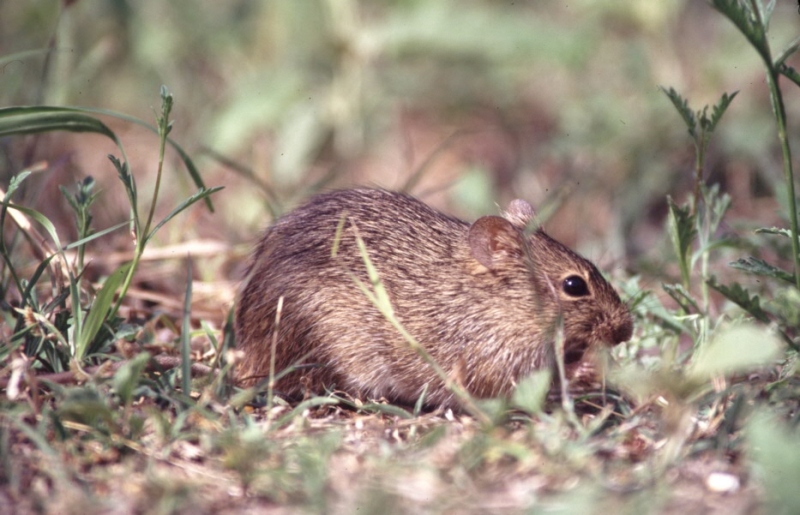The Cotton Rat: Pest or Prey
By Dave Hanks
I sit all day in a bird blind, on a private ranch, in southern Texas. It is April and the neo-tropical bird migration is in full swing. It cost a tidy sum for the privilege of sitting here, and I hope to get my money’s worth. Not only birds visit the feeding area in front of me, but a few mammals. One mammal that is a frequent visitor is a Cotton Rat. I discuss the occurrence of the rats with my host, who educates me to its relationship with the area’s Bobcats.
The Cotton Rat is named for its habit of building its nests out of cotton. This can be a major problem for cotton farmers. This rodent is found in southern Arizona, southern New Mexico, southern Texas, and into Mexico. It likes tall grass areas or cultivated fields. Like most rodents, it is very prolific – having 5 litters a year of 7 to 10 young at each nesting. The young leave the nest at 2 weeks of age and start breeding at 6 weeks. Wow! What a reproductive machine!
They are omnivores: eating grass, sedges, domestic grains, insects, and eggs. This 9 to 11 inch (1/2 pound) rat can be a real concern for agriculturists. Populations erupt over several years, but then crash – disease being the major cause. Coyotes, and especially Bobcats, find them as a major food source where the rat occurs. Bobcat populations of those southern areas rise and fall in direct relation to the rat’s population cycling.
Besides serving as prey, there is another benefit derived from this very pugnacious and quarrelsome rodent. They have proven to be useful in influenza virus research.
(Sigmodon fulviventer in a feasting mode)
|
